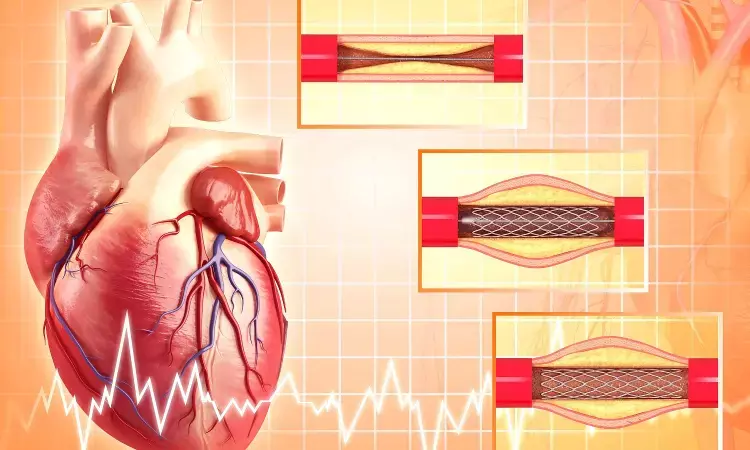- Home
- Medical news & Guidelines
- Anesthesiology
- Cardiology and CTVS
- Critical Care
- Dentistry
- Dermatology
- Diabetes and Endocrinology
- ENT
- Gastroenterology
- Medicine
- Nephrology
- Neurology
- Obstretics-Gynaecology
- Oncology
- Ophthalmology
- Orthopaedics
- Pediatrics-Neonatology
- Psychiatry
- Pulmonology
- Radiology
- Surgery
- Urology
- Laboratory Medicine
- Diet
- Nursing
- Paramedical
- Physiotherapy
- Health news
- Fact Check
- Bone Health Fact Check
- Brain Health Fact Check
- Cancer Related Fact Check
- Child Care Fact Check
- Dental and oral health fact check
- Diabetes and metabolic health fact check
- Diet and Nutrition Fact Check
- Eye and ENT Care Fact Check
- Fitness fact check
- Gut health fact check
- Heart health fact check
- Kidney health fact check
- Medical education fact check
- Men's health fact check
- Respiratory fact check
- Skin and hair care fact check
- Vaccine and Immunization fact check
- Women's health fact check
- AYUSH
- State News
- Andaman and Nicobar Islands
- Andhra Pradesh
- Arunachal Pradesh
- Assam
- Bihar
- Chandigarh
- Chattisgarh
- Dadra and Nagar Haveli
- Daman and Diu
- Delhi
- Goa
- Gujarat
- Haryana
- Himachal Pradesh
- Jammu & Kashmir
- Jharkhand
- Karnataka
- Kerala
- Ladakh
- Lakshadweep
- Madhya Pradesh
- Maharashtra
- Manipur
- Meghalaya
- Mizoram
- Nagaland
- Odisha
- Puducherry
- Punjab
- Rajasthan
- Sikkim
- Tamil Nadu
- Telangana
- Tripura
- Uttar Pradesh
- Uttrakhand
- West Bengal
- Medical Education
- Industry
BP variability in patients with CAD undergoing PCI associated with poor outcomes

Blood pressure variability (BPV) is independently associated with higher cardiovascular risks. However, whether BPV is associated with poor outcomes for coronary artery disease (CAD) patients after percutaneous coronary intervention (PCI) remained undetermined.
In coronary artery disease (CAD) patients, getting percutaneous coronary intervention (PCI), high blood pressure variability (BPV) before and after procedures is strongly linked to poor results, and the link between visit-to-visit BPV and clinical outcome is unrelated to underlying comorbidities and mean blood pressure, states a study published in The Journal of Clinical Hypertension.
Higher cardiovascular risks are independently linked to blood pressure variability (BPV). It is yet unknown, though, whether BPV is linked to poor outcomes for CAD patients following percutaneous coronary intervention (PCI). Additionally, the predictive significance of post-PCI visit-to-visit BPV is uncertain, and the majority of studies on visit-to-visit BPV concentrate on the baseline visit-to-visit BPV prior to PCI.
The researchers of the study investigated the link between BPV and the outcomes of CAD patients receiving PCI.
The study included 2,762 CAD patients (1938 men, mean age 69.6 12.9) who underwent PCI at Taipei Veterans General Hospital between 2006 and 2015 and had several blood pressure checks before and after the initial PCI. The authors determined the standard deviation of the BPV parameters, which are the systolic, diastolic, and pulse pressure. The primary endpoint was the composite of major adverse cardiovascular events (MACE), which included heart failure hospitalization, non-fatal myocardial infarction (MI), and non-fatal stroke (HHF). MACE was a significant secondary outcome.
Conclusive points of the study:
- Even after controlling for co-morbidities and mean blood pressure, both pre-PCI and post-PCI BPV were linked to CV events.
- In the Cox analysis, the hazard ratios for MACE + HHF, MACE, HHF, and cardiovascular death were 1.04 (95%CI: 1.03-1.05), 1.04 (95%CI: 1.02-1.05), 1.05 (95%CI: 1.04-1.06), and 1.06 (95%CI: 1.03-1.09), respectively, for every 1 mmHg increase in systolic BPV.
- BPV and cardiovascular risk is linked, however blood pressure regulation is not a factor in this relationship.
- Both before and after PCI, the predictive value of BPV outperformed mean blood pressure.
The investigators concluded that regardless of blood pressure control status, a strong link between BPV and cardiovascular risk persisted. Additionally, BPV from visit-to-visit following PCI continued to be a substantial risk factor for unfavorable results.
"Our findings suggest that visit-to-visit BPV should be taken into account as a significant risk factor for subsequent cardiovascular events following PCI," they added.
REFERENCE
Tsai, T-Y, Leu, H-B, Hsu, P-F, et al. Association between visit-to-visit blood pressure variability and adverse events in coronary artery disease patients after coronary intervention. J Clin Hypertens. 2022; 1- 12.
https://doi.org/10.1111/jch.14565
Dr Kamal Kant Kohli-MBBS, DTCD- a chest specialist with more than 30 years of practice and a flair for writing clinical articles, Dr Kamal Kant Kohli joined Medical Dialogues as a Chief Editor of Medical News. Besides writing articles, as an editor, he proofreads and verifies all the medical content published on Medical Dialogues including those coming from journals, studies,medical conferences,guidelines etc. Email: drkohli@medicaldialogues.in. Contact no. 011-43720751


